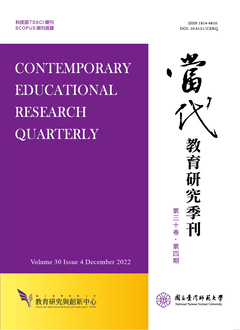

當代美學多只專注於藝術領域的研究,自然美學則對自然美感欣賞方面有深入的討論。本文即在以文獻分析法,分別論述認知取向與非認知取向的自然美學主張,接著評析兩派的爭論點,並闡釋其在美育上的意涵。認知取向的學者強調科學、民間故事、神話與宗教等知識能幫助自然的美感欣賞,非認知取向的學者則反對認知的必要性,主張感官、情感、融入與想像的重要性。兩派的爭論集中在認知與美感欣賞的關係及淺層或深層的問題。本文認為美感欣賞與認知並不衝突,且兩種取向都能達到深層的欣賞。依此,本文對美育提出了三點啟示:一、加強自然欣賞的美感教育;二、結合認知與非認知取向的自然美感欣賞教學;三、由自然美感欣賞教育提升生命的境界。
Most contemporary aesthetics always focus on the field of arts,while aesthetics of nature explores more on the aesthetic appreciationof nature. This paper uses literature analysis as the method to discussthe different critical stance between the cognitive approach and thenon-cognitive approach in terms of the aesthetics of nature, reviewsargument points of the two approaches and interprets their meaningfor aesthetic education. Scholars of cognitive approach emphasizethat the knowledge of science, folklore, mythology and religion canhelp us to appreciate natural beauty. Scholars of non-cognitiveapproach oppose the necessity of knowledge and emphasize theimportance of sense, emotion, engagement and imagination. The twodebates focus on the relationship between cognition and aestheticappreciation, and on the problem of trivial and serious in aestheticappreciation of nature. The study argues that aesthetic appreciation isnot necessarily in conflict with cognition, and both are able to reach adeep level of appreciation. Accordingly, this study indicates threemeanings for aesthetic education: 1. To strengthen aestheticeducation of natural appreciation. 2. To integrate cognitive approachand non-cognitive approach into the teaching of aestheticappreciation of nature. 3. To expand the vision of life throughaesthetic education of natural appreciation.

本著作係採用創用 CC 姓名標示-非商業性 3.0 台灣 授權條款授權.
本刊國立台灣師範大學教育研究與創新中心
106台北市和平東路一段162號 | 電話: 02-7749-3670 | E-mail: cerecerq@gmail.com
教創中心 | 師大 | 電子報 | 線上投審系統
本刊由國家科學及技術委員會人文社會科學研究中心補助經費
© 2014 CERI-NTNU
